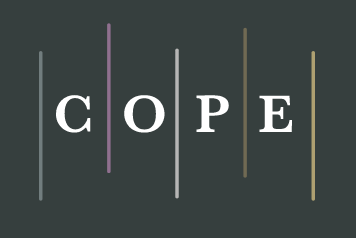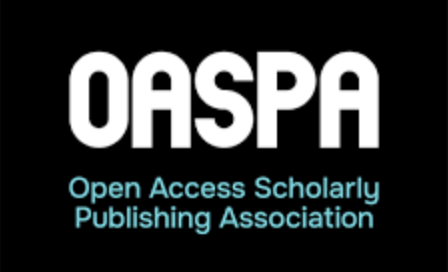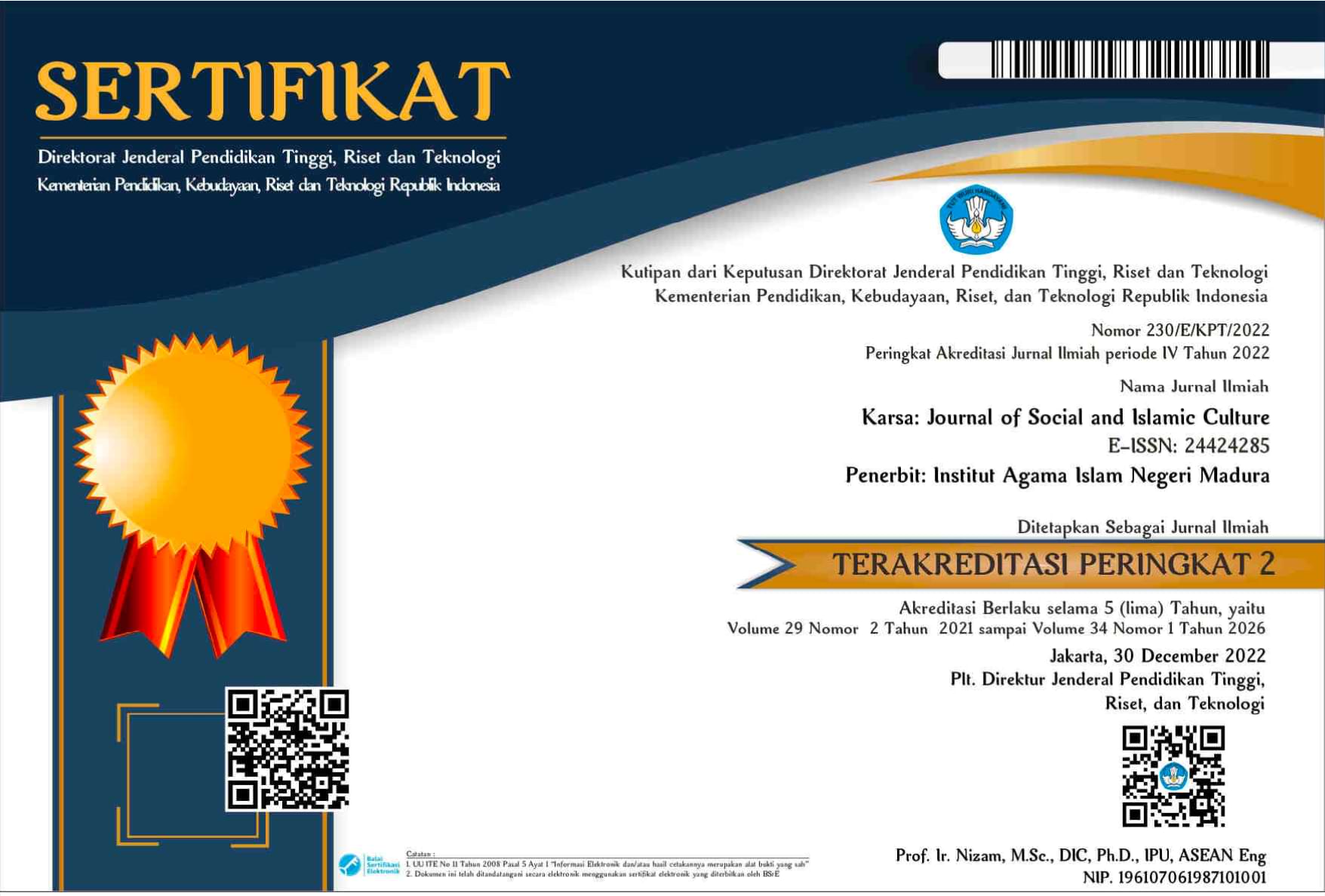Effects of the Digital Game-Based Learning (DGBL) on Students Academic Performance in Arabic Learning at Sambas Purbalingga
 Abstract views: 749
,
Abstract views: 749
,
 PDF downloads: 376
PDF downloads: 376
Abstract
Downloads
References
Almelhes, Sultan. “Teaching of Arabic language proficiency (pronunciation) to non-native speakers: Designing interventions using ICT.” Thesis, Western Sydney University, Australia. (2016).
Anetta, L.A. and Cheng, Meng-Tzu. Why Educational Video Games? In. Anetta, L.A. Serious Educational Games from Theory to Practice. Rotterdam: Sense Publisher, 2008.
Brosh, Hezi. “Motivation of American College Students to Study Arabic.” International Journal of Humanities and Social Science. (2013).http://www.ijhssnet.com/journal/index/2128. Accessed April 10, 2018.
Cornillie, F., Thorne, S.L., dan Desmet, P. “Digital Games for Language Learning.” European Association for Computer Assisted Language Learning: 24-3 (2012). doi: 10.1017/S09583 44012000134.
Dajani, B.A.S., Mubaideen, S., and Omari, F.M.A. “Difficulties of Learning Arabic for non-native speakers.” Procedia - Social and Behavioral Sciences (2014). doi: 10.1016/j.sbspro.2013.12.808
Divjack, B., and Tomic, D. “The Impact of Game-Based Learning on The Achievement of Learning Goals and Motivation for Learning Mathematics-Literature Review.” Journal of Information Organization Science: 35-1 (2011). https://jios.foi.hr/index.php/ jios/article/view/182. Accesed April 10, 2018.
Egentfeld-Nielsen, S.(2006). Overview of Researchon The Educational Use of Video Games. Digital Kompetanse: 1-3 (2006): 184–213. https://www.idunn.no/file/pdf/33191508/overview_of_research_on_the_educationaluseof_video_games.pdf. Accessed April 10 2018.
ESA. 2011 Sales, demographic and usage data essential facts about the computer and video game industry”. Washington DC: Entertainment Software Association (ESA), 2011.
Evie, M. “Which is the correct statistical test to use?.” British Journal of Oral and Maxillofacial Surgery 46 (2008): 38-41. doi: 10.1016/j.bjoms.2007.09.002.
Gamevision. Video Gamers in Europe 2010. Brussels: Interactive Software Federation of Europe. http://www.isfe.eu/sites/isfe.eu/ files/video_gamers_in_europe_2010.pdf. Accessed October 5, 2016.
Holes, Clive. Modern Arabic : Structure, Function and Varieties. Washington D.C.: Georgetown University Press, 2004.
Hutchinson, Tom and Woodbridge, Teresa. Project 2 Second Edition: Teacher’s Book Level 2. Oxford: Oxford University Press. 1999.
Jap, Tjibeng, et al. “The Development of Indonesian Game Online Addiction Questionnaire.” PLos ONE (2013): 8(4). doi: 10.1371/journal.pone.0061098.
Katmada, A., Mavridis, A. dan Tsiatos, T. “Implementing a Game for Supporting Learning in Mathematic.” The Electronic Journal of e-Learning 2 (3) (2014): 230‑242. http://www.ejel.org/ volume12/issue3/p230. Accessed April 10, 2018.
Ke, F. and Grabowski, B. “Game Playing for maths learning: Cooperative or not?.” British Journal of Educational Technology 38 (2007): 249-259. doi: 10.1111/j.1467-8535.2006.00593.x
Kothari, C.R. and Garg, Gaurav. Research Methodology: Methods and Techniques Third Edition. New Delhi: New Age International Publisher, 2014.
Lawrence, R. “Teaching data structures using competitive games.” IEEE Transaction on Education. (2004): 47(4). doi: 10.1109/TE.2004.825053.
Malone, T.W. “What makes things fun to learn? A study of intrinsically motivating computer games.” Technical report, Xerox Palo Alto Research Center, Palo Alto, California. (1980).
Mayer, R.E., Johnson, C.I. “Adding Instructional Features that Promote Learning in A Game-Like Environment.” Journal of Educational Computing Research (2010) : 42(3). doi: 10.2190/EC.42.3.a.
Musawi, A.A., Hashmi, A.A., and Kazem, A.M. “Perception of Arabic Language Teachers toward Their Use of Technology at The Omani Basic Educational School.” Educational and Information Technologies (2014): 21 (1). doi: 10.1007/s10639-013-9305-5.
Nam, C.S., and Smith-Jackson, T.L. “Web-based learning environment: a theory based design process for development and evaluation.” Journal of Information Technology in Education (2007) : 6(23). doi: 10.28945/200.
Papastergiou, M. “Digital game-based learning in high-school computer science education. Impact in on educational effectiveness and student motivation.” Computers and Education (2009)a: 44 (4). doi: 10.1016/j.compedu.2008.06.004.
Prensky, Mark. “Students as Designer and Creators of Educational Computer Games: Who else?.” British Journal of Educational Technology (2008): 39(6). doi: 10.1111/j.1467-8535.2008.008 23_2.x.
Reinders, Hayo and Wattana, Sorada.(2015). “Affect and Willingness to Communicate in Digital Game-Based Learning.” European Association for Computer Assisted Language Learning (2015): 27 (1). doi: 10.1017/S0958344014000226.
Teh, K.M.S.M., et al. “Language Learning Strategies and Motivation among Religious Secondary School Students.” The International Journal of Language Society and Culture (2009). https://www.researchgate.net/publication/254644986_Language_Learning_Strategies_and_Motivation_among_Religious_Secondary_School_Students. Accesed April 10, 2018.
Vogel J.J., et al. “Computer Gaming and Interactive Simulations for Learning: A Meta-Analysis.” Journal of Educational Computing Research (2006): 34 (3). doi: 10.2190.
Zafar, Bassam, Mueen, Ahmed, and Awedh, Mohammad. “Game-based Learning with Native Language Hint on Student Academic Performance in a Saudi Arabia Community College.” Journal Computer of Education (2014): 1(4) doi: 10.1007/s40692-014-0017-7.
Zin, Nor Azan Mat, Jaafar, Azizah, and Yue, Wong Seng. “Digital Game-based Learning (DGBL) model and development methodology for teaching history.” WSEAS Transaction on Computers (2009): 2 (8). https://ukm.pure.elsevier.com/en/publi cations/digital-game-based-learning-dgbl-model-and-development-methodology. Accessed April 10, 2018.
The journal operates an Open Access policy under a Creative Commons Non-Commercial Share-Alike license. Authors who publish with this journal agree to the following terms:
- Authors retain copyright and grant the journal right of first publication with the work simultaneously licensed under a Creative Commons Attribution License that allows others to share the work with an acknowledgement of the work's authorship and initial publication in this journal.
- Authors are able to enter into separate, additional contractual arrangements for the non-exclusive distribution of the journal's published version of the work (e.g., post it to an institutional repository or publish it in a book), with an acknowledgement of its initial publication in this journal.
- Authors are permitted and encouraged to post their work online (e.g., in institutional repositories or on their website) prior to and during the submission process, as it can lead to productive exchanges, as well as earlier and greater citation of published work.





















